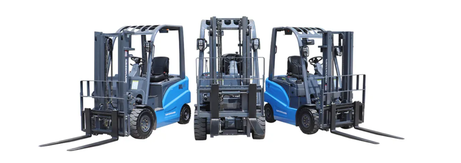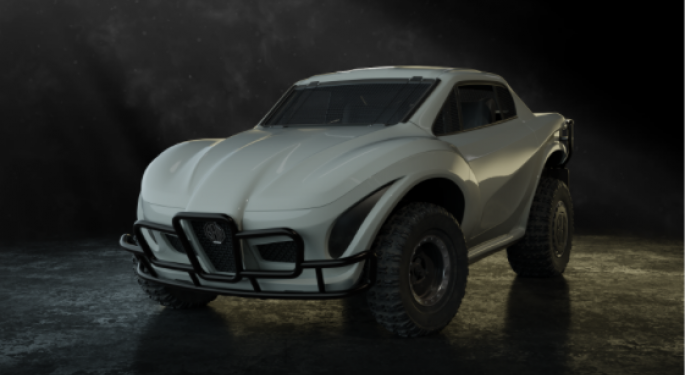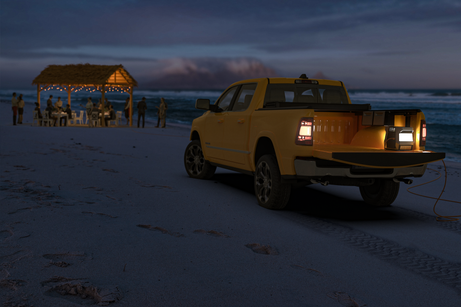
Electrification of Heavy Industrial Equipment Is Already on the Horizon
Previously Published to Benzinga
The following post was written and/or published as a collaboration between Benzinga’s in-house sponsored content team and a financial partner of Benzinga.
Leading the next generation of commercial, industrial vehicles into greener pastures, Greenland Technologies Holding Corp. (NASDAQ: GTEC) has been working hand-in-hand with several market sectors as the pioneer driving change in the electrification of industries, traditionally dominated by heavy-emission internal-combustion systems.
Greenland Technologies is a developer and manufacturer of drivetrain systems for materials handling, industrial machinery, electric vehicles (EVs) and electric industrial vehicles.
The company prides itself on the fact that with every piece of heavy electric machinery sold, there is one less heavy emissions vehicle being used.
From construction to agriculture and property management to manufacturing, Greenland has been excited to see a shift in how companies are beginning to view big business. The company is creating new green policies with the desire to minimize carbon emissions and a heightened sense of responsibility when it comes to the impact its businesses have on environmental, social and governance (ESG) initiatives.
The problem has been — up until now — that there were very few options for these industries when pulling away from heavy diesel equipment and the inescapable emissions they create.
Already a market leader in China for the manufacture of transmissions and drivetrains for material-handling vehicles, Greenland not only decided it was time to be the solution, it became the 1st company in the world to make a drivetrain system specifically for lithium-powered forklifts — an area it already specializes in.
Why Go Electric? A Glimpse into the Solution
According to Greenland Technologies, the new GEF-series lithium powered electric forklifts offer a significant competitive advantage over legacy vehicles powered by lead-acid battery arrays, giving customers both financial and operating advantages of electrification in a warehouse fleet, including lower maintenance costs and 3 times the service life of a lead-acid power source.
Greenland’s GEF electric lithium forklift was designed with a range of load capabilities featuring onboard applications for the tracking and management of warehousing and logistics, manufacturing and quality-assurance metrics. In addition to other tools and accessories, this makes the production and warehouse environment safer, more efficient and exceedingly productive.
The GEF series features 3 models tailored to customer-related needs, intended use and the environments they serve.
The company recently introduced its 1.8-tonne loading capacity front loader — perfect for applications like removing snow, waste management, construction and agriculture. It is the first commercially available industrial-sized electric front loader and is currently available for sale in the United States. This vehicle will be shortly followed by an 8.0-tonne loading capacity all-electric excavator.
The company plans to expand its current manufacturing operations to create new assembly sites and experience centers across the eastern United States. All products will soon be assembled in America.
Each model is competitively priced for its superior quality and low-maintenance factors. This means a lifetime of savings for electric products that last longer — with higher returns on investment, lower periods of downtime and fewer parts to maintain. There is no cost for fueling, and electricity is significantly lower and much more convenient to maintain. In fact, batteries will last up to 9 hours on just a 2-hour charge.
The company currently holds more than 108 patents for its many innovative manufacturing processes. While Greenland’s zero-emissions GEF-series electric lithium forklifts and GEL-1800 electric front loader are already available, the company’s electric excavators aren’t expected to be available until January.
While competitors such as Caterpillar Inc. (NYSE: CAT), Volvo ADR (OTCPK: VLVLY) and Hitachi Ltd.(OTCPK: HTHIY) have electric versions of loaders and excavators, they’re not available for commercial or retail sale.
Things to Think About
Going into the winter season, there’s a strong interest in EVs for plowing snow, which reduces the risk of getting sick when the frigid cold mixes with the toxic fumes of a diesel-powered engine.
Dirty exhausts create dirty snow, which often is slung at children waiting for the bus. When the snow melts, it soaks into clothing and absorbs into the skin of children who should never be exposed to it.
In agriculture, farmers and ranch hands can produce a higher quality of indoor and outdoor air conditions for their livestock and crops at harvest time. Farmers often keep their pigs, cattle and feed supply in massive barns next to diesel front loaders.
Emissions, whether the frontloaders are in use or not, can seep into the air, spill into the food supply and poison the animals. Over time, they develop cancers and diseases that could have been avoided. Workers are also impacted, not just by being in those conditions but by eating the livestock that’s been raised for food.
Greenland says its machines are about 60% quieter than a diesel engine, meaning there’s less physical and emotional stress on the livestock, and farmers will see better yield over time.
The company’s lithium-powered forklifts and front loaders are available now, and the excavators are planned to be released by January.
For more information about the company or how you can invest, visit ir.gtec-tech.com. Investors can also check out Greenland Tech’s most recent earnings call here: https://ir.gtec-tech.com/financials/quarterly-results
The preceding post was written and/or published as a collaboration between Benzinga’s in-house sponsored content team and a financial partner of Benzinga. Although the piece is not and should not be construed as editorial content, the sponsored content team works to ensure that any and all information contained within is true and accurate to the best of their knowledge and research. This content is for informational purposes only and not intended to be investing advice.


